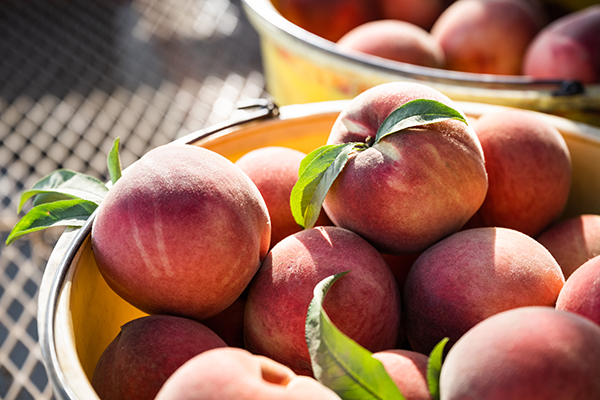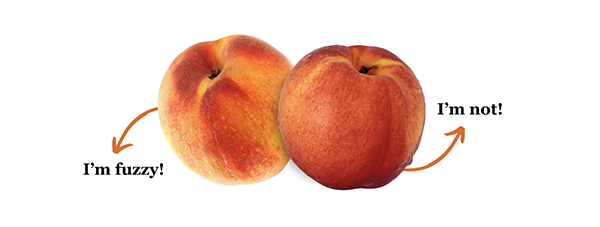How to Ripen Peaches and Nectarines: 5 Juicy Stone Fruit Tips
- By Erin Mittelstaedt
- Reading Time: 3 mins.
Arctic Fire, Honey Blaze, clingstone, freestone—the terms we use to talk about peaches and nectarines would make awesome band names! These fun variety monikers are relatively recent, but peaches and nectarines have been around for quite a while.

A Brief History of Stone Fruit
Both stone fruits likely originated in China thousands of years ago. From there, they made their way west into the Middle East and Europe before crossing the Atlantic to the Americas. Historians believe that Spanish explorers brought peaches to the US in the 1500s, and to California in the 1700s.
Sometimes I forget that even though stone fruit has been around for a very, very long time, many people in America didn’t snack on it until a few generations ago. The California nectarine industry didn’t take off until the 1950s. And one of our stone fruit farmers who started farming in the mid-80s told us he’s seen the number of peach, nectarine, and plum varieties available soar from just a handful to more than 300 per fruit over the last 40 years.
Fun Stone Fruit Facts

- One of my favorite things about nectarines and peaches, besides their delicious taste, is that they’re basically twins. The only difference? A single gene: peaches have fuzzy skin, nectarines don’t.
- Although each variety of peach and nectarine is different, generally speaking yellow fruit has a nice balance of sweetness and tartness while white fruit is sweeter and less acidic.
- Stone fruits can be clingstone, semi-cling, or freestone. You can tell the difference by cutting the fruit in half and trying to take out the pit. If you can pull it out easily, the fruit is freestone. If you have to cut the fruit away from the pit, it’s clingstone. Semi-clings are in the middle, leaning toward freestone. Interestingly, clingstone fruits generally show up first in the stone fruit season.
How to Ripen Peaches and Nectarines
Peaches and nectarines are climacteric, meaning they continue to ripen after picking. You can eat them on the firmer side, but their flavor is best when they give a little to the touch. To help them ripen and reach that perfect texture, store them at room temperature. (This also protects them from chilling injury, which can turn them brown and mushy.)
Here are a few more storage and ripening tips to get your stone fruit just right:
-
Keep your fruit away from direct sunlight and heat.
-
Double check it with the sniff test—if your peach or nectarine has a sweet aroma, it’s probably ripe and ready.
-
If you can’t eat your ripe fruit right away, move it to the refrigerator to keep it fresh.
- If you have excess or overripe fruit, freeze it or bake it! We have a recipe for stone fruit jam and one for an apricot-peach tart.
Now, if you’ll excuse me, I’m off to try and form my new band: I just need to decide between The Autumn Flames (a yellow peach) or Snow Queen (a white nectarine).
Welcome to the Chief Banana newsletter—weekly letters from the desk of The FruitGuys’ CEO. Find more Chief Banana newsletters here. To get Chief Banana in your inbox every week, fill out the “Subscribe to our Newsletter” form on this page.
Recent Articles
4 Health Benefits of Eating Cherries at Work
2025 Summer Fruit Guide: What’s In Season Now?
Subscribe to our Newsletter
"*" indicates required fields





